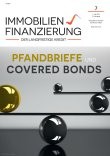Sie befinden sich hier: Home › Immobilien & Finanzierung › Themenschwerpunkte › Aufsätze › COVERED BONDS AND THE TRANSITION TO A SUSTAINABLE ECONOMY
Aufsätze
01.07.2022
PFANDBRIEFE UND COVERED BONDS
COVERED BONDS AND THE TRANSITION TO A SUSTAINABLE ECONOMY

Antonio Farina, Foto: privat

Dieser Artikel ist Teil unseres Online-Abo Angebots.
Immobilien & Finanzierung, Ausgabe vom 01.07.2022, Seite 316
Aufsätze
4,50 €
2125